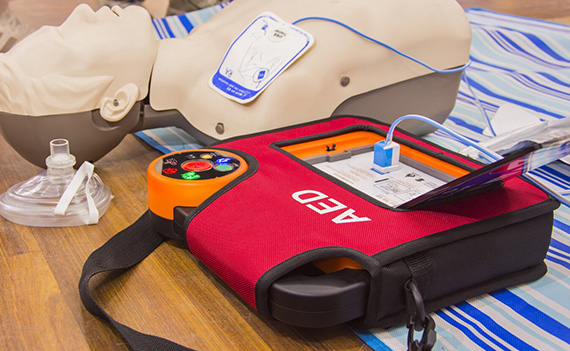Automated External Defibrillator Training (AED)
Delivery methods available:
Face-to-face

Duration
3 Hours
(as a standalone course)
Bolt On
1.5 hours to other
first aid qualifications that share the same assessment criteria
Cost
Enquire with our team
Capacity
Max. 12
AED Course Reviews
This regulated and nationally recognised course is suitable for persons who wish to demonstrate safe and appropriate practice using an AED in line with current European and UK Resuscitation Council Protocols. Although previous knowledge is unnecessary, we recommend that participants have a current First Aid at Work or Emergency First Aid Certificate.
By the end of the session, participants should be able to:
- Effectively communicate and carry out CPR in an emergency
- Have a basic understanding of ventricular fibrillation
- Know what makes a victim suitable/unsuitable for defibrillation
- Utilise an available external defibrillator safely and in line with the manufacturer’s instructions
- Be aware of the maintenance requirements of AEDs
- Carry out appropriate record-keeping relating to the use of AEDs
- Potential sources of danger and causes of unconsciousness
- Common causes of and signs of cardiac arrest
- Ventricular fibrillation and its significance
- Defibrillation and the Importance of early defibrillation
- When an AED should be used, the maintenance requirements of an AED
- What records have to be kept
Resuscitation skills must be refreshed regularly, particularly by those who must respond in an emergency. The principle is that skills should be maintained at an adequate level at all times.
Individual employers and organisations should make arrangements for retraining to be available, but the frequency of this refresher training will depend on the individual. For guidance, skills should be refreshed at least once a year, but preferably more often- UK Resuscitation Council 2016